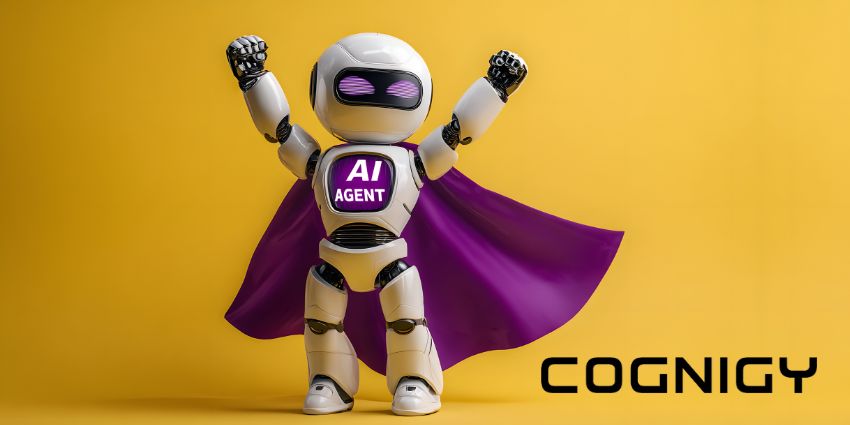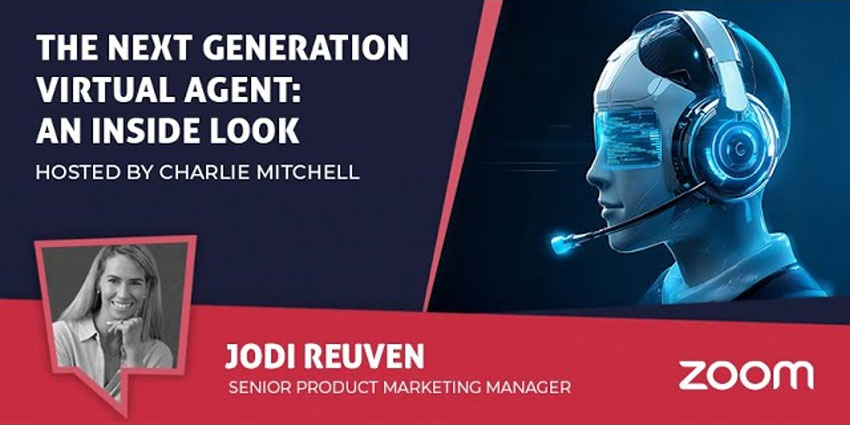“If you can play a videogame, you can build a bot,” suggests a recent Opus Research Study. It almost sounds like fun.
Yet, early adopters of intelligent virtual agents (IVAs) will tell a very different tale, hiring teams of conversation designers, computational linguistic specialists, and knowledge management experts. Skilled developers would write endless lines of code to manage the most straightforward transactions.
Thankfully, in the past five to ten years, lots has changed. Leading technology providers have designed low-code tools that bring CX experts closer to the process, so they can train the IVAs themselves.
Now, building a bot simply involves navigating drop-down menus, picking particular tasks or actions, and choosing “connectors” to direct the flow of dialogue.
Such an evolution has pushed IVAs passed the naysayers and transformed the technology into a CX staple. What’s more, IVA struggles that were once painful realities are now simple misconception.
Angela Lepelley, Sales Director, AI & Automation at Five9, is on a mission to spread this message, sharing four classic IVA misconceptions and emphasizing the new truth.
Misconception #1: Customers Prefer Live Agents
Forrester Research once suggested that 54% of US online consumers believe interacting with an IVA negatively impacts their quality of life.
Yet, less than four years later, the analyst uncovered a considerable change in IVA perspectives. Its 2021 Future of Chatbots report summarized: “Despite their rocky first impressions, the future of the chatbot market is bright.”
Such a shift again highlights how quickly IVAs have advanced. Yet, it also hints that customers are becoming fonder of the technology, as they crave convenience and dread the thought of long call queues. Zendesk research, which indicates that 40% of consumers who contact a call centre do so after looking for answers via self-service first, compounds these trends.
Studies like this suggest that the preference for human support is dwindling, and many CX leaders are perhaps overlooking the potential of IVAs. As Lepelley says:
Of course, there will always be times when you will need to speak to somebody. For example, when we have a complex issue. However, it turns out that 70% of the calls that agents take are, in fact, simple requests and could be resolved with IVAs.
In addition, IVAs are ever-present, offering convenient 24-hour service across many channels – including the phone – with voicebots now coming to the fore.
Accelerating this trend is the rise of smart devices – such as Alexa and Google Home – familiarising consumers with self-service interactions. Thanks to these devices, contactless service through IVA conversations will likely become a significant future CX trend.
Misconception #2: IVAs Will Replace Human Agents
The rise of IVAs was first accompanied by doomsday prophecies, predicting the downfall of the contact centre agent.
In 2016, The Telegraph released an article entitled: “Robots will replace customer service agents – thank god for that.” In 2018, The Guardian published a story stating that the: “Rise of robots threatens to terminate the UK call-centre workforce.”
Years later, these speculative predictions are a far cry from reality. The truth is far less eye-catching: robots are high-speed but limited; people are very slow but brilliant. Only by combining their best qualities can contact centres operate at their full potential.
Building on this point, Lepelley says:
IVAs can recall information far more quickly than an agent sitting and searching through systems and pages, trying to find the right answer. It’s essential that we recognise the differences, and it’s important that we pick the right agent, whether it’s virtual or human, for the right task.
As such, the trend of maximizing the human touch in CX has risen in prominence. Companies are striving to combine the speedy data processing, accuracy, and scalability of bots with the innovation, empathy, and reassurance capabilities of humans.
To support this future, leading vendors are supercharging their IVA technologies with the power of intent and sentiment recognition, ensuring instant human escalation when queries become overly complex or emotionally significant enough to impact CX.
Misconception #3: IVAs Lack the Capacity for Personalization
The recent rise of IVAs was perhaps fuelled by necessity, as opposed to a desire for ingenuity. The Great Resignation soon followed pandemic-induced contact surges, leaving many managers scrambling to drive service levels down to a shadow of what was once the norm.
IVAs answered the call, and companies rushed them through production to fend off generic queries of medium complexity. Soon realizing their value, some took a bold stance to push them further and break the barriers to personalized contact automation.
Now, as per the Opus Research study, 18% of IVAs have reached a level of maturity and secured the back-end integrations to pull in personalized information and pave the way for customer transactions.
Digging in deeper into the capacity of these mature IVAs, Lepelley states:
Virtual agents can connect to data sources and know who you are, when you last contacted, and on which channel to see what you’ve just purchased and lots of other information.
Using this information, the IVA can predict customer needs, personalise the interaction, and save that information within the back-end CRM, enabling companies to open up a deep well of customer data.
In a soon-to-be cookie-less world, such a new data source is critical for truly personalized CX, which extends far beyond using the customer’s name in automated interactions.
By collecting first-party data through an IVA, companies can continue demonstrating an understanding of individual customers, acting on that knowledge, and winning in the new digital-first world.
Misconception #4: IVAs Are Difficult to Deploy and Expensive
Once upon a time, this was the harsh reality. Indeed, as Dr. David Naylor – founder of Humanotics – once said: “A bank in Australia came across almost 2,000 different ways for how people could ask for a bank balance. These were all programmed into their chatbot. You would think this query would be straightforward, but it takes time!”
Thankfully, since then, advances in natural language understanding (NLU) have made it much easier to get to grips with customer intent. As a result, contact centres can wave goodbye to conversational designers, computational linguistic specialists, and these lengthy processes. Instead, all this is now neatly packaged into the IVA.
An excellent example is a voicebot. Simple models that understand customer intent and route customers accordingly take only a couple of hours to deploy. Building in contact automation requires more time. But think days and weeks, not months and years.
Another critical reason for this increasing ease of deployments is the shift to CCaaS environments and the heightened accessibility of APIs. These advancements are also lowering costs, according to Lepelley. She says:
The days of heavy on-prem installation are way behind us. The running costs of an IVA are typically around 10% of the cost of employing a human agent. And finally, it’s usage-based, so you pay for what you need, when you need it.
Finally, as a complexity and cost buster, the significance of no-/low-code IVA innovations must not slip under the radar. Allowing CX teams to take charge of the design processes, the result is a solution that fits customer needs, not what is easiest for the IT team.
As a result, the solution is not only cost- and time-efficient but increases the chances of CX success.
A Market-Leading Intelligent Virtual Agent (IVA) Solution
The previously highlighted Opus Research study pinpoints Five9 as a leading provider in the IVA market, singling out its voice-first assistance capabilities for particular praise.
In addition, the analyst suggests that Five9 leads the space “by offering a broad array of proven solutions designed to integrate with its cloud-based contact center offerings.”
To lift the lid on these solutions and discover more, check out the Five9 Intelligent Virtual Agent on the vendor’s website.







